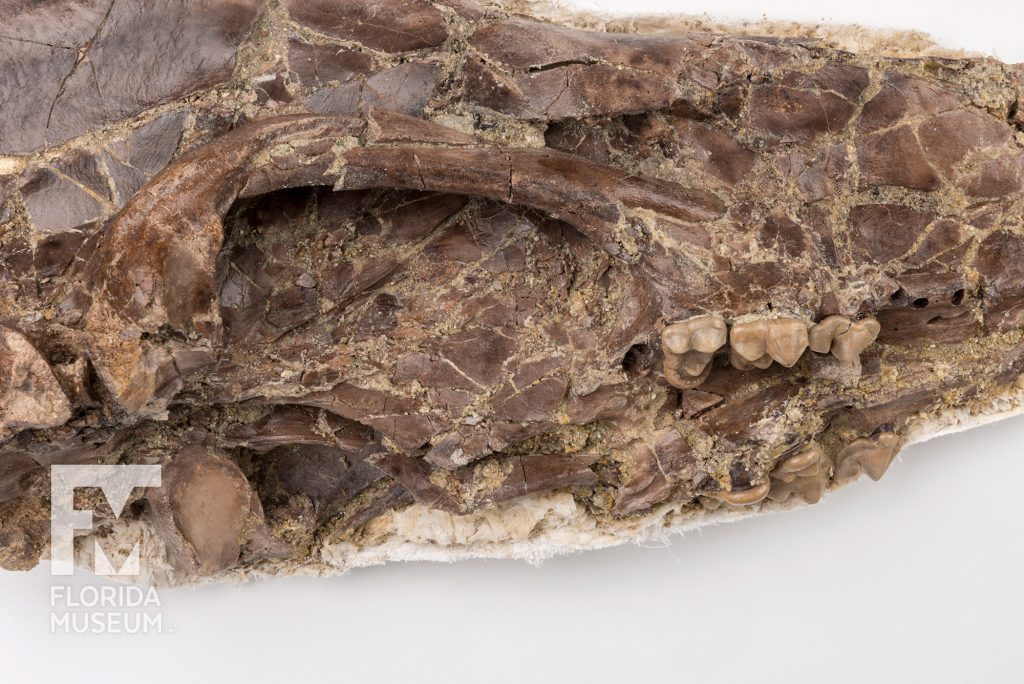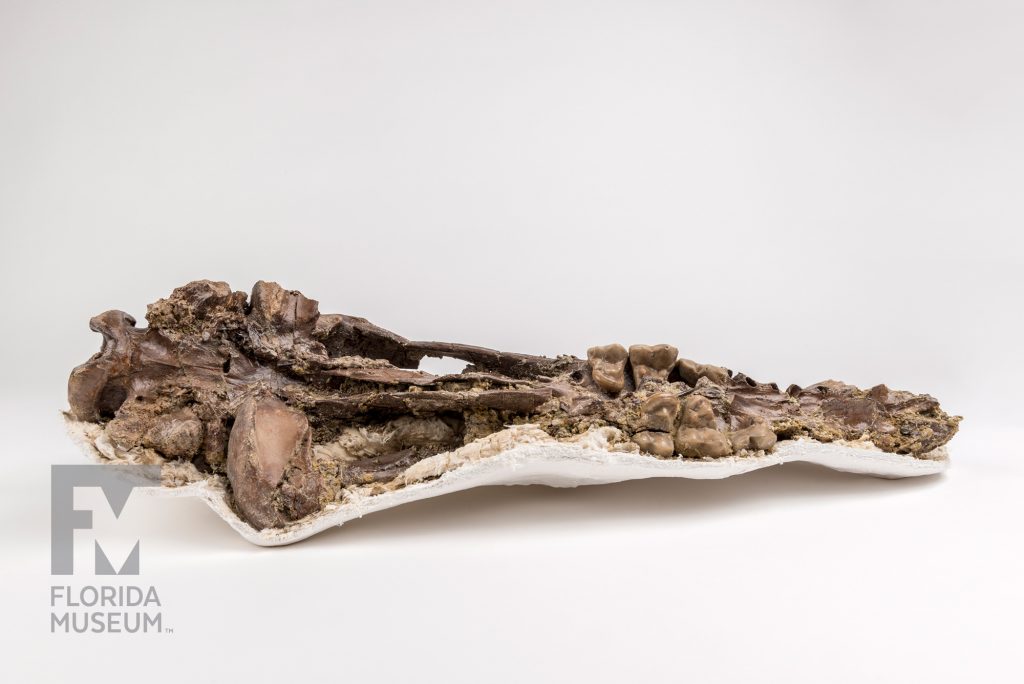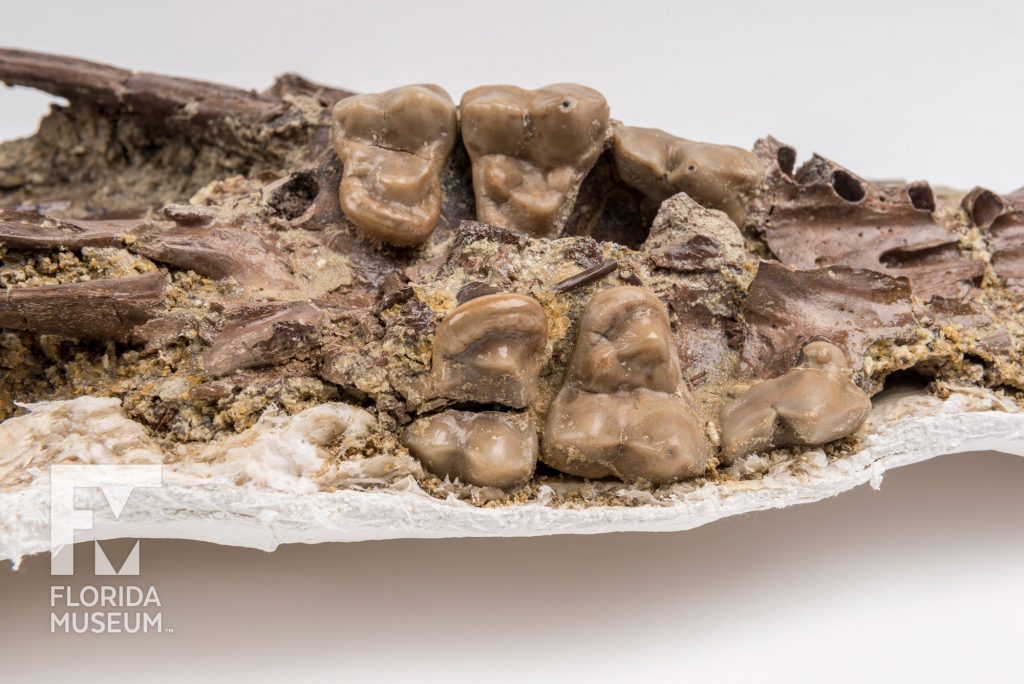During excavations, paleontologists place fragile fossils inside plaster jackets to protect them for transport to the lab. Once there, they carefully remove the dirt and rock surrounding the bones, and may leave the fossil in its jacket for safe storage.
Summary
White’s Bear-Dog Skull (Amphicyon longiramus)
From Gilchrist Co., Florida
Lived ~20–16 million years ago
Collection
Story
When we’re out at a fossil site and we find a fragile or rare fossil we want to make a plaster jacket around the fossil to bring it back to the Museum where we can prep it in a slow and methodical way, instead of out in the field where it would be exposed to the elements and potentially fall apart.
So what we do is we dig a trench around the specimen when we find it and we try to figure out exactly what the limits of that specimen are. And then once we’ve dug the trench around the specimen we take plaster bandages and wrap the whole pedestaled specimen that’s still in the dirt underneath and then we undercut the specimen, flip it over and bring it back to the Museum.
Once it’s at the Museum we can then methodically and slowly, under microscopes and with dental picks and brushes, prep the specimen and glue it so that it can stay intact and doesn’t fall apart. If we were to try to lift it out of the ground when we first find it, it would just explode into a million pieces so we want to do it the most careful way we can.
Jason Bourque
Fossil Preparator, Vertebrate Paleontology*
Florida Museum of Natural History
Exhibit
On display Sept. 23, 2017-Jan. 7, 2018, Rare, Beautiful & Fascinating: 100 Years @FloridaMuseum celebrated the Museum’s rich history. Each Museum collection was asked to contribute its most interesting items and share the stories that make them special. Though the physical exhibit is closed, this companion website remains online, providing an opportunity to experience the Florida Museum’s most treasured specimens.
Exhibit Area: Working Lab
Theme: Preservation and Preparation
 Want to see more? Explore more than 300 breathtaking color photos of plants, animals, fossils and cultural heritage materials from the Florida Museum of Natural History’s collections in the award-winning book All Things Beautiful available from the University Press of Florida.
Want to see more? Explore more than 300 breathtaking color photos of plants, animals, fossils and cultural heritage materials from the Florida Museum of Natural History’s collections in the award-winning book All Things Beautiful available from the University Press of Florida.
*This title was accurate at the time the exhibit was on display in 2017. Please visit the collection website to verify current staff and student information.



